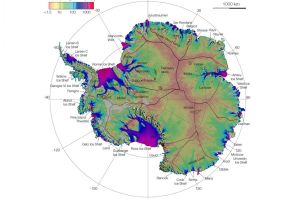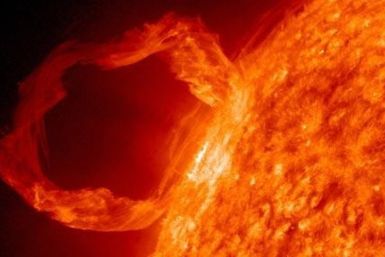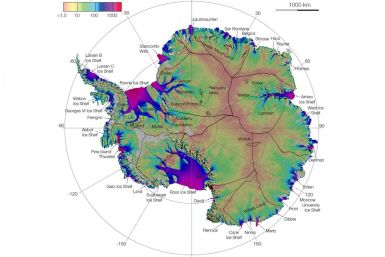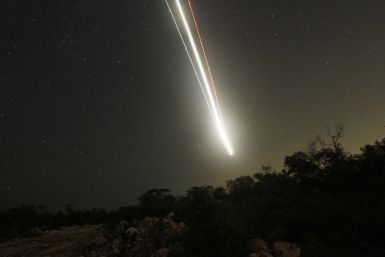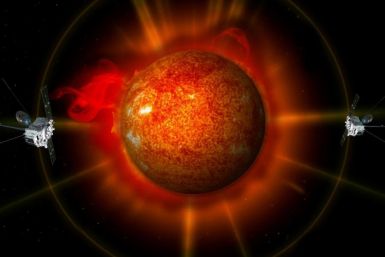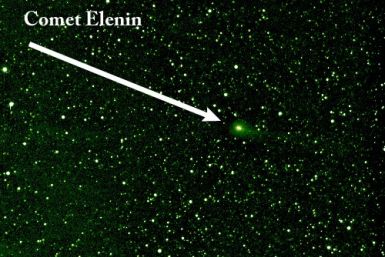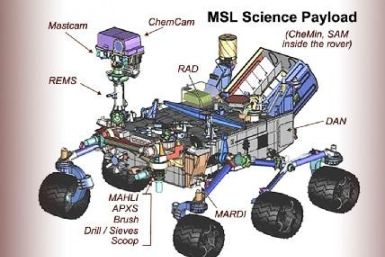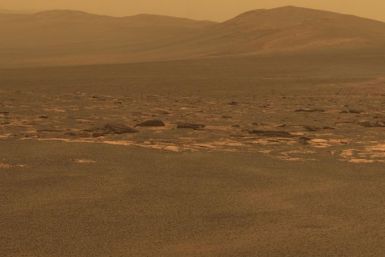It may sound like a plot of a sci-fi movie, but aliens might attack Earth to destroy humanity for the greater good of the rest of the Milky Way galaxy.
NASA released new videos of a solar storm engulfing our planet, captured by a spacecraft far from Earth. The footage of the storm released on Thursday, was recorded in December 2008 and scientists have been working on it ever since. It's the first time such footage has been captured and solar physicists say it could lead to important advances in space weather forecasting.
NASA-funded researchers created the first complete map of the speed and direction of ice flow in Antarctica, showing glaciers flowing thousands of miles from the continent's deep interior to its coast.
NASA's Meteoroid Environments Office has issued an alert for Cleveland area residents to look out for meteorites.
A spacecraft far from Earth turned and watched a solar storm engulfed the planet for the first time, and NASA released a movie on the act, which solar physicists say could lead to important advances in space weather forecasting.
The universe is a truly amazing, beautiful place, and Hubble has captured images that are almost too spectacular to comprehend.
New data processing techniques, coupled with NASA spacecraft, has for the first time allowed scientists to see the awesome power of the sun as it recorded a massive solar storm engulf the planet.
NASA has teamed up with researchers from the University of California and various space agencies to map the Antarctica ice flow.
The analysis of one lunar rock has raised a hoard of questions about the formation of the moon as results suggest the moon could potentially be 200 million years younger than believed.
A government agency that helped invent the Internet wants to award an organization $500,000 in seed money to begin studying what it would take to send people to the stars.
Earth's moon might not be as old as widely believed, as emerging new techniques date moon rocks to a more recent time.
NASA has clarified in a statement that comet Elenin, expected to come closest to Earth on October 16, 2011, will not collide with Earth.
NASA is discounting rampant Internet rumors that comet Elenin will strike Earth or disrupt its gravitational pull in October.
Astronomers at the European Southern Observatory say the vast cloud of glowing gas from the earliest days of the universe must be powered by galaxies embedded within it.
As NASA closed one epic chapter of launching space shuttles in July it has opened another by devising an educational rap video that maps out the NASA mission.
NASA said that 3-5 kilometer-wide comet Elenin will not wreak havoc upon our Earth. The space agency said that it is too small and that its "closest approach" to Earth will bring it 90 times the Earth-moon distance. NASA decided to hold a Q & A session headed by Don Yeomans of NASA's Near-Earth Object Program Office at NASA's Jet Propulsion Laboratory in Pasadena, Calif., and David Morrison of the NASA Astrobiology Institute at the NASA Ames Research Center in Moffett Field, Ca...
The European Space Agency's (ESA) Don Quijote Mission plans to launch two spacecraft that will fire into a test asteroid to study the possibility of diverting an impact to earth.
Private rocket company Space Exploration Technologies (SpaceX) has received a November 30 launch date from NASA for a cargo delivery to the International Space Station.
NASA is preparing to launch a more advanced rover to delve even deeper into the history of Mars, just as its current rover is hitting its stride.
NASA's Mars Exploration Rover (MES) Opportunity after painstakingly covering a 13-mile journey in three years has reached the Red Planet's Endeavor crater.
Jodie Foster, Academy Award winning actor, producer and director, was among 2,557 donors helping SETI (Search for extraterrestrial intelligence -- collective name for a number of activities people undertake to search for intelligent extraterrestrial life) in its lookout for alien radio signal from outer space.
NASA's Spitzer Space Telescope has announced a possible first-ever cosmic detection of flat carbon flakes called graphene in two small galaxies outside the solar system. Upon confirmation, researchers believe that it might hold vital clues on how life developed on Earth.



